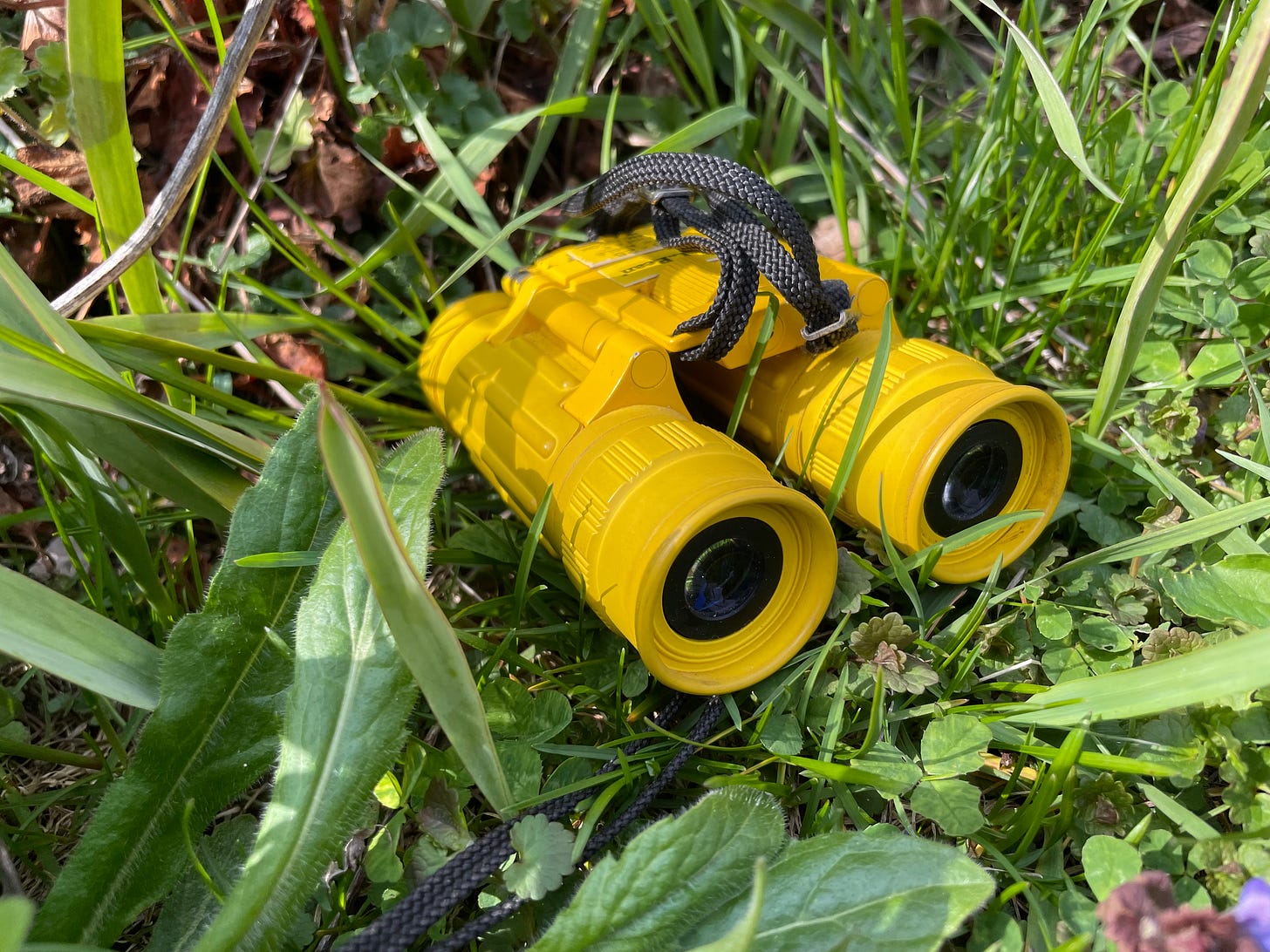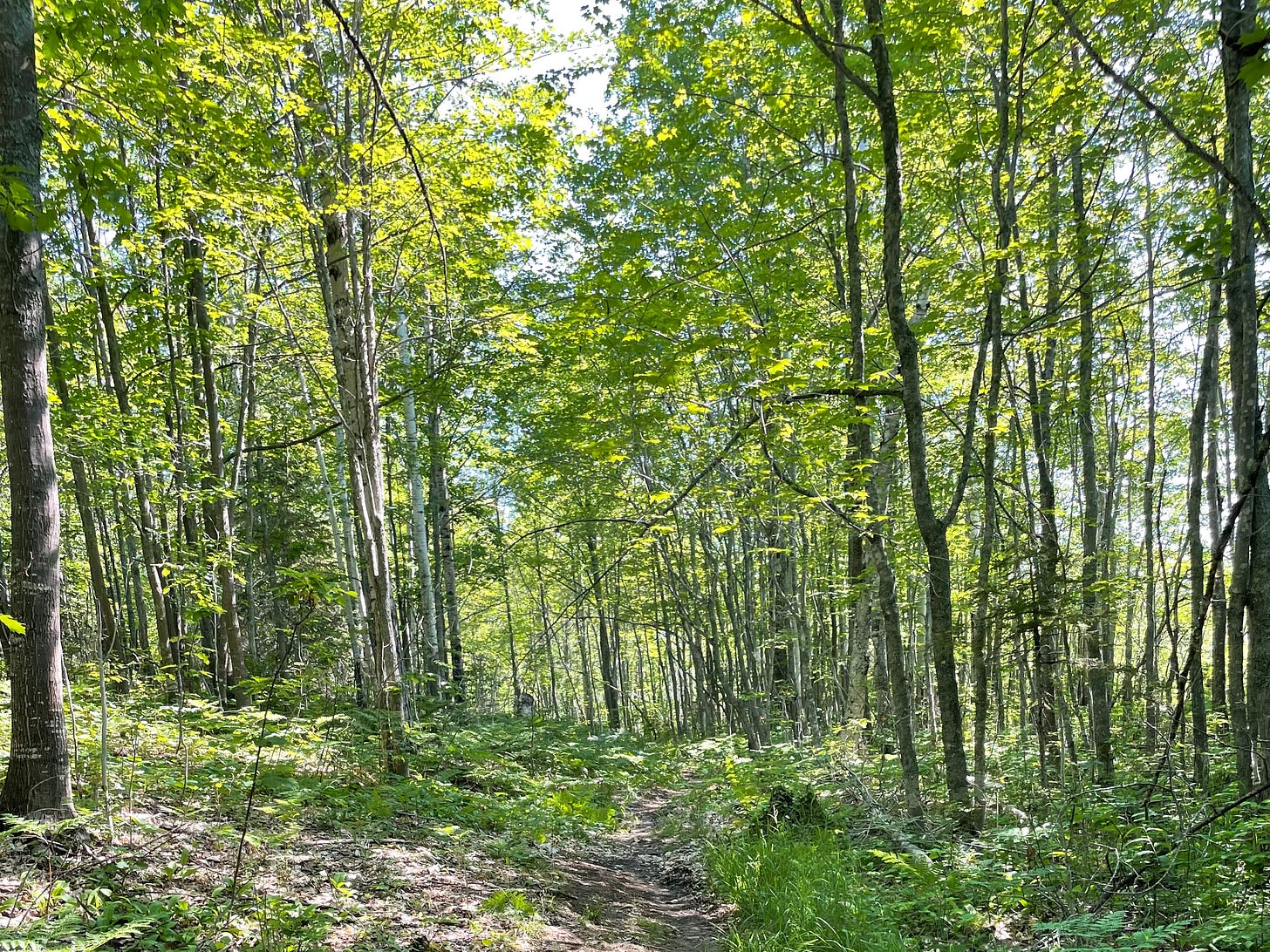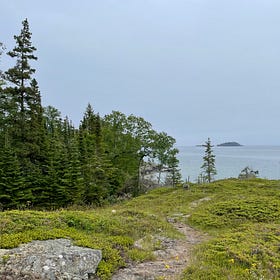Last weekend—as I was finishing up my recent essay about backpacking Isle Royale1—an occasional, but very familiar birdsong wafted in from my parents’ backyard in suburban Milwaukee. Though I am generally pretty useless at identifying birds by ear2, something about this one kept tickling at a memory in the far reaches of my mind. The bird would belt out a single round of its tune and then go silent for hours, while I was left wondering why the sound was bringing to mind the image of a rather mundane section of trail on Isle Royale. Finally, I decided that wires must have crossed in my brain, conflating what I was writing about with some common bird I was hearing.
The next day, after continuing to hear the song on and off (and still unable to open the Merlin app3 in time to capture the sound), I asked my mom for identification help. Turns out that my memory is not as flawed as I had feared! I had been hearing a White-throated Sparrow, a bird that dominated the soundtrack of my 2021 visit to Isle Royale, but that I’ve rarely heard since.
Isle Royale is solidly in the breeding range for White-throated Sparrows and our backpacking trip in late June was only about a week after the end of spring migration. The birds who call the park home for the summer were all moved in by the time we arrived! Though Chicago is a wintering spot according to the range map, I have no recollection of ever hearing their sweet whistle of “Oh sweet Canada Canada Canada” while in the city. Very possibly, I haven’t been looking and listening hard enough. Also possible is that the Lincoln Square neighborhood is not an attractive winter home when there are thousands of acres of parkland available in the Cook County Forest Preserves mere miles away.
There were two days of that Isle Royale backpacking trip where the song of the (yet to be identified by us) White-throated Sparrow was incessant. We had left the shoreline-hugging trails and turned inland to cross the width of the island, surrounding ourselves with denser forest. This coincided with the point in the trip where we were running out of things to say, so our conversations began to veer off into all sorts of odd directions.4 One of those directions was fixating on this birdsong.
My very abridged pocket guide for birds of the Great Lakes region didn’t include useful information for birding by ear and I hadn’t yet downloaded the Merlin app. Instead, my friend and I tried to brute force the identification without any real knowledge base to send us in the right direction. I was convinced that if we could figure out the mnemonic device associated with the song, we could figure out the name of the bird. After all, chickadees helpfully include their name in their song!
I tried singing the name of each bird listed in the pocket guide to the tune we were hearing, but wasn’t confident about any of the contenders. We spent a dozen miles or so coming up with other phrases that might fit the rhythm, also to no avail. While filtering water on the dock at McCargoe Cove, I casually asked other hikers if anyone was a birder. Head shakes were the only response. My tiny travel binoculars and laminated pocket guide were my only resources in our sector of the island.

The birdsong increased as we left McCargoe Cove and headed to the Greenstone Ridge. The more I listened, the more I noticed variations—the birds that weren’t quite hitting the high notes, the ones that were a little flat or a little sharp on all the notes, the ones that couldn’t get through the whole tune before starting over, as if they were practicing a tricky section of an unfamiliar composition. We were walking through the avian equivalent of a middle school choir practice—occasional strong, clear voices of the adults trying to lead by example that were mostly drowned out by the enthusiasm of youth.
I didn’t end up learning the name of the White-throated Sparrow until I returned home. Though the song rang clear in my head, finally identifying it required me to compare a list of known birds on Isle Royale with YouTube videos of their songs until I heard the familiar melody. After all that effort, I was confident the bird’s song and name would be etched into my mind for all eternity! How quickly both confidence and memory fade.
My fondness for the White-throated Sparrow hasn’t diminished, even if hearing its song last weekend was like hearing the name of someone I couldn’t quite place. I haven’t sought them out since Isle Royale and honestly, haven’t thought much about them since I finally put a name to the voice. However, I’m grateful that one stopped outside the window where I was working to say hello en route to more northern climes—not just for an hour or for a night, but long enough for me to remember that we are indeed old friends.
For my thoughts on what makes Isle Royale special and how to plan a great first trip there:
The Best Way to Backpack Isle Royale
How do you tackle visiting a new-to-you park? Do you go for breadth and try to see all the hot spots, even if it means more time driving between scenic overlooks than spent hiking? Or do you go for depth and focus on a smaller area, knowing that you’re likely to miss out on some of the iconic views? Unless you have infinite time or the park is tiny, com…
Or really at all.
The Merlin app is what has made me dip my toe into birding these past few years. When I was a kid, my mom would borrow bird song tapes from the library to work on her identification skills and that learning process felt so overwhelming to me. Merlin makes it much easier to get started.
For more about conversations on trail:
What We Talk About on Trail
The best fish for a fish fry. Jokes about lichen. Halloween costume ideas for the park ranger who filled out my backcountry permit. Conversations have a tendency to veer off in unexpected directions when I’m walking in the woods!






Haha, good that you could figure it out! I have always had doubts about birds saying their names (though it must have been fun to try singing them all!) and bird song mnemonics - to my mind they are never remotely similar to the actual song?!?
I remember trying to learn birdsong via CDs and it was indeed overwhelming - I never got beyond the first 5-10 birds, which were not even ones I often encountered outdoors. I think using an app, walking around with a birder, or starting with just a handful of songs of the most common species works much better. I think my post next week will be about species ID, so I've been thinking about it a lot ;)